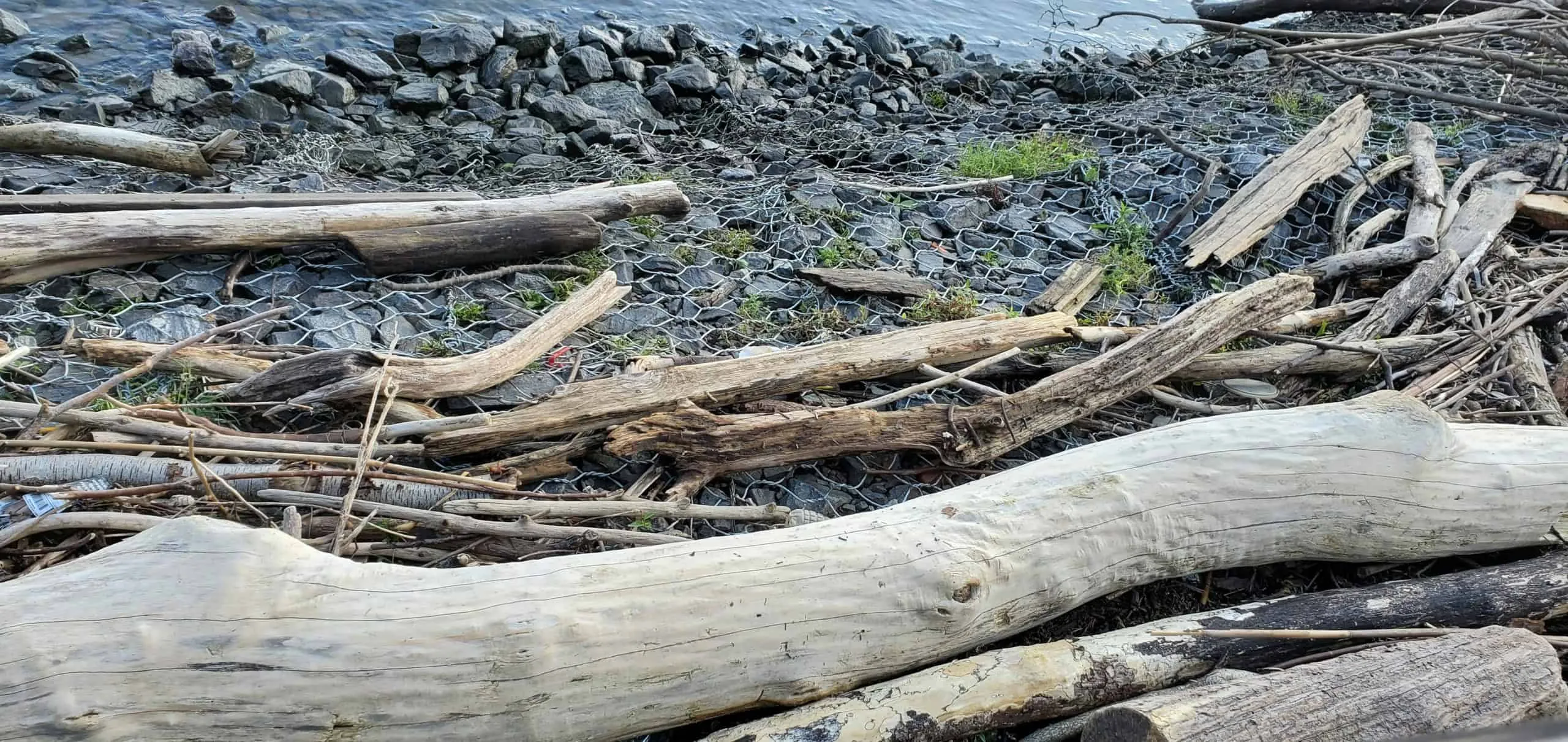What is driftwood?
Driftwood represents floating wood that has been washed up on the shore or beach of a river, sea, or lake by winds, waves, or tides. This wood washes into the ocean or other bodies of water due to flooding, high winds, storms, or logging. There also exists a subgroup of driftwood from man-made objects called drift lumber, which can be described as either jetsam (dropped dunnage or cargo from ships) and flotsam (remains of shipwrecked boats and ships).
Once the wood gets into the water, it starts getting colonized by various bacteria, algae, and small animals. These lifeforms start eating the organic matter on the surface of the wood and boring an elaborate network of tunnels through it. This natural process is known as rotting, and it happens to all driftwood.
Driftwood can spend a different amount of time in the water, but sooner or later it gets washed ashore by the currents. Once out of the water, the driftwood starts getting bleached by the sun – which dries the waterlogged wood and kills off the bacteria and algae that colonized it. The result is an always unique piece of driftwood, that is significantly lighter than when it first got into the water. This process also slows down any further rotting, as the majority of organic matter has been eaten already by the aforementioned microorganisms.
Driftwood can come from local varieties of hard and softwood, but commercially available driftwood is usually Tiger, Spider, Mopani driftwood and others.
Fun fact – In Norse mythology, the first humans were created out of two pieces of driftwood by Odin and his brother. The Vikings
What’s the difference between weathered wood and driftwood?
Weathered wood, also known as aged, distressed or reclaimed wood, is a term used for wood that has slowly degraded from exposure to various factors such as moisture, sunlight, temperature, chemicals, abrasives, etc. This gives a wood a rustic and rough texture and appearance. As weathering is an umbrella term, it can be said that all driftwood is weather wood, but not all-weather wood is driftwood. Commercially available weather wood is usually treated with various methods – such as chemicals, various tools, and others.
As such, the main difference between weather wood and driftwood is the fact that driftwood needs to spend a certain amount of time in the water, and then be washed ashore to be considered driftwood. As already discussed, this unique waterlogging, rotting, and then drying process of driftwood gives it its special characteristics and makes it weigh less than its weathered counterpart.
What is driftwood used for?
Driftwood presents a very versatile material, with a wide variety of possible applications. Historically, it was mainly used by the Inuit people for making kayaks, bows, and arrows and used as firewood, as regular wood is scarce in the Arctic.
Today, driftwood is often used for furniture – benches, tables, coat hangers, and various decorations can be fashioned from driftwood. The only real limitation is imagination. Using driftwood is a great way to give the inside and outside of your house a rustic, marine vibe. Driftwood furniture and decorations can either be a great DIY project or are available for purchase.
Driftwood is also commonly used by Aquarists as decorations for their fish tanks. The driftwood helps control the pH of the water and releases tannins, which can give the water in the tank a specific color. It can be also used in terrariums for spiders, scratching posts for cats, or even a chewing toy for dogs. Another application is artworks – you can often see driftwood sculptures on beaches or riverbanks.


